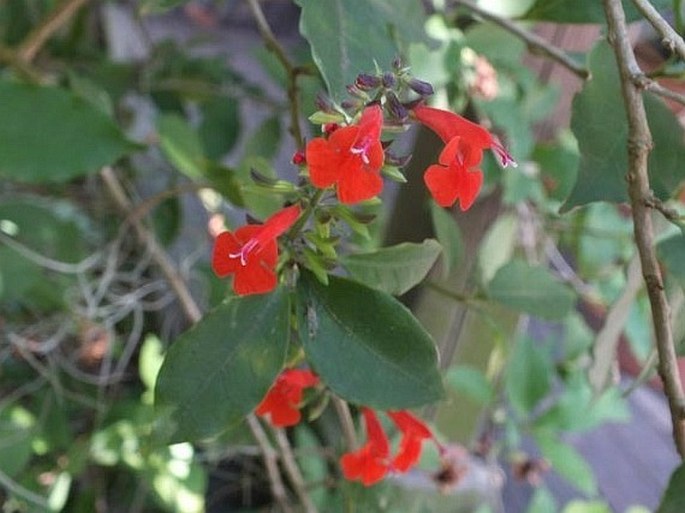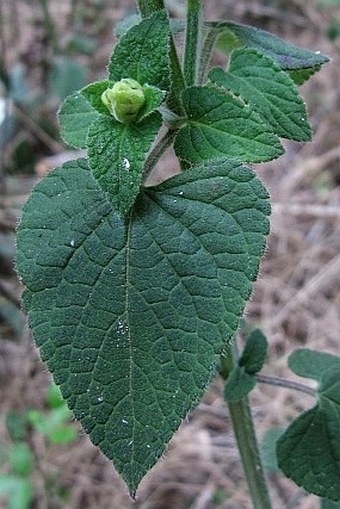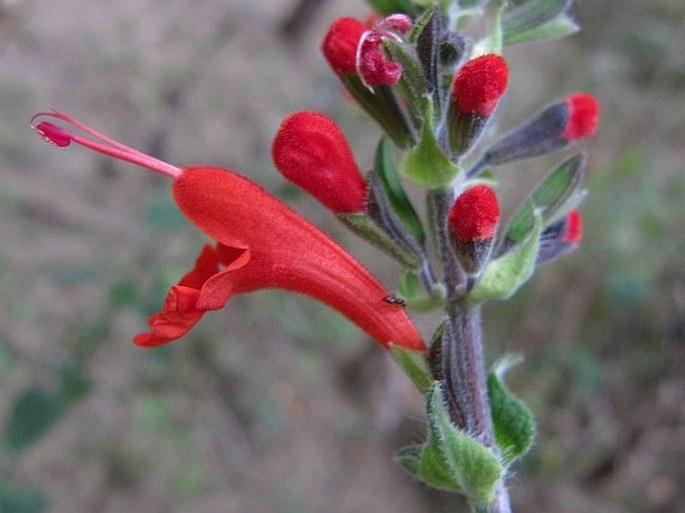Syn.: Salvia pseudococcinea Jacq., Horminum coccineum (Buc’hoz ex Etl.) Moench
Family: Lamiaceae Martinov

Distribution: Originally from Central America, spread to south eastern states of US from Texas to as far north as South Carolina. Besides Central America and Caribbean islands also Colombia, Peru, Brazil and north Argentina. Introduced to Africa, southern Asia and Pacific Islands.
Ecology: Grows in grass, open forest and its margins, among shrubs, partially tolerant to shade, in well drained substrate.
Description: Perennial herb to subshrub, 40–100 cm tall, branched from base. Stems and leaves finely hairy; leaves opposite, shortly petiolate, cordate, with dentate margins, about 8 cm long and 5 cm wide, aromatic. Flowers in terminal spike, bracts acutely triangular, short; calyx shorter than bract, 2-lipped, green with purple lips; corolla tubular, 2-lipped, scarlet red, about 2.5 cm long, lower lip forming 2 lobes; stamens and pistil exserted from corolla. Fruit is a nutlet.
Note: Scarlet colour is conducive to pollination by hummingbirds and butterflies. For its attractiveness this plant became a favourite garden plant, where climate allows it.





These images were taken in Réunion, Cirque de Salazie (by Věra Svobodová: November 15, 2010) and USA, Louisiana, New Orleans (by Karel Bergmann: May 2014).


